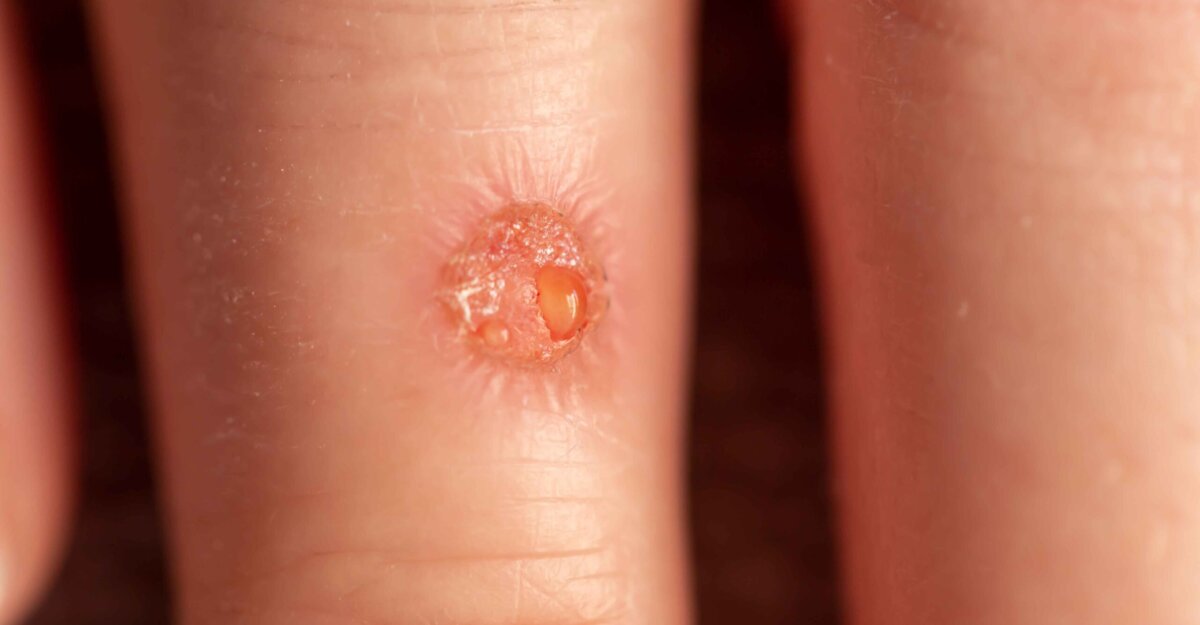Serous exudate is the most common type of drainage. And while this doesn’t usually raise concerns, it can provide clues of more serious complications.
Like other healthcare professionals, wound care clinicians use keen observation skills to provide the best care and get the very best patient outcomes.
One important area of expertise is recognizing the different types of wound drainage, also known as exudate.
Two wound care clinicians share more about serous wound drainage and what its presence may indicate.
Serous vs. serosanguineous
The most common types of wound drainage are serous and serosanguineous. Serous exudate is a normal finding when present in small amounts, but excessive amounts are typically uncommon, said Julia Hope, BSN, RN, CWOCN at Banner Baywood Medical Center in Mesa, Arizona.
It’s helpful to know the difference between these two drainage types, said Hope. “Serous drainage is blood plasma without the proteins. Its color is either clear or straw colored.”
Conversely, “Serosanguineous drainage is plasma mixed with blood proteins and may appear light red or pink,” she added.
The presence of small amounts of either type is normal in a healing wound, she added.
What does serous exudate signify?
Serous occurs when tissues are damaged, Hope said. “We see serous exudate in post-operative incisions and other wounds.”
Serous exudate can also be observed throughout the healing process, said Joni Brinker MSN/MHA, RN, WCC, Clinical Nurse Educator with Optum Hospice Pharmacy Services.
“Scant to minimal amounts of serous exudate are considered normal wound drainage during the inflammatory and proliferative stages of wound healing,” Brinker said.
However, an increase in the level of this exudate may indicate infection, Brink added. She highlighted that excessive levels (in some cases) can be due to underlying conditions such as:
- Congestive heart failure
- Lower extremity venous disease
- Malnutrition
Physical characteristics
Both Hope and Brinker described the range of physical characteristics of serous exudate as follows:
- Color: Clear/colorless, pale yellow, or straw colored
- Consistency: Thin, watery
- Odor: Odor may be present if the exudate is caused by infection.
Treatment and dressing choices
According to Brinker, treatment modalities will vary based on the amount of exudate present. “Scant to minimal amounts of serous exudate are considered normal wound drainage, and topical dressings are used to maintain this exudate level,” she said.
One common treatment for serous wound drainage is using highly absorbent dressings such as alginates and foams, said Hope.
Treatment of scant to minimal levels are managed using dressings like amorphous hydrogels, transparent films, thin foams, or hydrocolloids, Brinker added.
And wounds with moderate to heavy levels (not caused by infection) can be managed by treating the underlying causative factors. “Compression may be initiated to manage lower extremity venous disease while using absorptive dressings to maintain quality of life,” Brinker said.
Absorptive dressings for moderate to heavy exudate levels include:
- Calcium alginate
- Carboxymethylcellulose fiber
- Foam
- Superabsorbents
Addressing infection
If there’s an increase in serous exudate levels, infection may be present. “In this case, topical antimicrobials, and in some cases, systemic antibiotics are initiated, especially when signs of spreading or systemic infection are present,” Brink said.
She added that moderate to heavy serous exudate levels caused by infection is managed by applying a topical antimicrobial dressing, such as a silver, cadexomer iodine, or medical-grade honey.
Evidence of wound infection is typically associated with increased drainage, especially seropurulent drainage that is thicker, yellow/green or brown, and may be odorous, Hope said.
“The signs or symptoms associated with infection [also] include increased pain, redness, and swelling around the incision/wound as well as an elevated body temperature,” Hope added.
Potential challenges with serous exudate
Scant to minimal levels is a normal finding and a good indicator that wound healing will occur, said Brinker. “A minimal level of serous exudate is easily managed with topical dressings that offer long wear times.”
However, several challenges can develop when copious amounts are present, added Hope.
Challenges can include:
- Frequent dressing changes
- Maceration (or super hydration) of the surrounding skin
- An increase in the number of supplies required to manage the wound
- Increased discomfort for patients due to frequent dressing changes
- Higher monetary cost for patients
“If the underlying cause of the increased serous exudate cannot be resolved, the frequency of dressing changes can become burdensome,” Brinker said.
When delayed wound healing occurs
According to Hope, wound healing can be delayed by multiple factors, including:
- Presence of infection
- Swelling
- Inadequate circulation
- Elevated blood glucose
- Suboptimal nutrition
Tight glycemic control and management of swelling through elevation and compression are typically used to improve wound healing, Hope said.
Good nutrition is also needed. Consuming an adequate amount of protein and staying hydrated are essential, she added.
Hope mentioned that the general recommendation is to consume 1.5 grams of protein per kilogram of body weight total per day, divided throughout the course of waking hours. “This will provide the individual [with] the building blocks to repair the wound along with adequate hydration,” she said.
Regarding fluid intake, “The rule of thumb with fluid consumption is 30 ml per kilogram of body weight daily,” Hope said.
With any exudate — from serous to purulent — it’s important to reassess patients holistically and observe wounds for changes in color, consistency, odor, and/or amount, Brinker said. By observing these changes, you’ll see more clues around a wound’s status or worsening of a patient’s underlying disease.
If you're interested in expanding your knowledge of wound care, networking with colleagues, or seeing the latest wound care products and technology, register for the Wild on Wounds (WOW) conference August 14–17 in Phoenix, Arizona.
Register NowWhat do you think?

